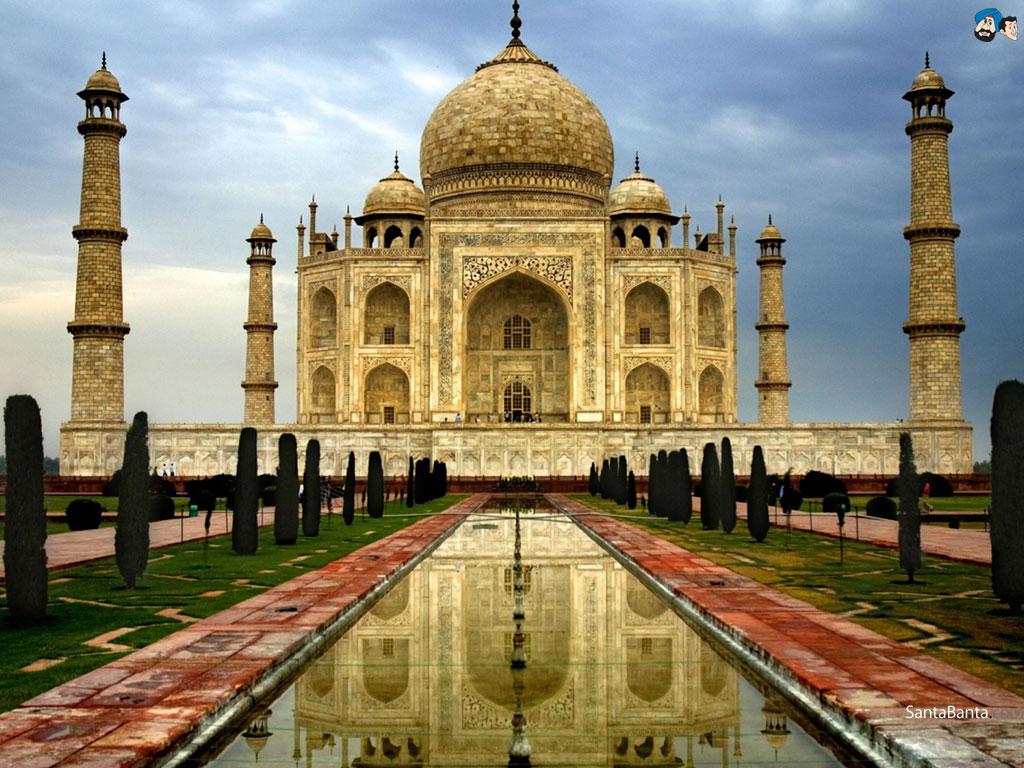10. Mysterious Deafening Sound over Jodhpur
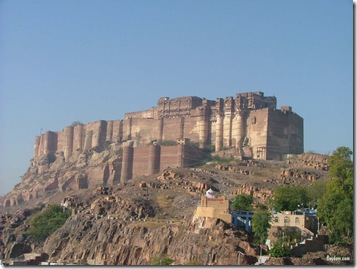 In December of 2012, a deafening sound was heard by the residents of Jodhpur, Rajasthan. Initial the rumors corresponded to “sonic boom” from a military aircraft, but Defence spokesman completed denied any explosion or heavy military aircraft over the concerned airspace. As per the regulations, no sonic boom should occur in populated areas. Such ‘natural’ sonic booms are commonly reported in the deltas or Ganga and Brahmaputra, but have never been heard of in Rajasthan.
In December of 2012, a deafening sound was heard by the residents of Jodhpur, Rajasthan. Initial the rumors corresponded to “sonic boom” from a military aircraft, but Defence spokesman completed denied any explosion or heavy military aircraft over the concerned airspace. As per the regulations, no sonic boom should occur in populated areas. Such ‘natural’ sonic booms are commonly reported in the deltas or Ganga and Brahmaputra, but have never been heard of in Rajasthan.
9. Taj Mahal or Tejomahalaya
 According to this famous conspiracy theory, Taj Mahal was originally an ancient Shiva Temple, Tejo Mahalaya, which the Moghul Emperor Shahjahan took by force from the then Maharaja of Jaipur. There is even a book published titled “Taj Mahal: The True Story” by P.K. Oak on this theory. In his book, he points out a number inconsistencies based on historical facts and Taj Mahal’s architecture to expound on his views. In 2000 Supreme Court of India dismissed Oak’s petition to declare that a Hindu king had built it and in 2005 similar petition was dismissed by the Allahabad High Court.
According to this famous conspiracy theory, Taj Mahal was originally an ancient Shiva Temple, Tejo Mahalaya, which the Moghul Emperor Shahjahan took by force from the then Maharaja of Jaipur. There is even a book published titled “Taj Mahal: The True Story” by P.K. Oak on this theory. In his book, he points out a number inconsistencies based on historical facts and Taj Mahal’s architecture to expound on his views. In 2000 Supreme Court of India dismissed Oak’s petition to declare that a Hindu king had built it and in 2005 similar petition was dismissed by the Allahabad High Court.
8. Mysterious Luminescent Lights of Bay of Bengal
 On December 28, 1929, when the British steamship Talma was en route to Calcutta in Bay of Bengal, everyone on board witnessed small luminous balls arising from under water and breaking at the surface. They later appeared like flashes of lightning under the water and quickly transformed into regular beams. They curved into a pattern of spokes of a wheel that rotated rapidly. This was not an isolated event either. Similar phenomenons were reported a lot of times on Indian seas; especially in Bay of Bengal. A more plausible assumption might be luminescent bacteria or phytoplankton, but their bizarre pattern does raise questions. More detailed infohere.
On December 28, 1929, when the British steamship Talma was en route to Calcutta in Bay of Bengal, everyone on board witnessed small luminous balls arising from under water and breaking at the surface. They later appeared like flashes of lightning under the water and quickly transformed into regular beams. They curved into a pattern of spokes of a wheel that rotated rapidly. This was not an isolated event either. Similar phenomenons were reported a lot of times on Indian seas; especially in Bay of Bengal. A more plausible assumption might be luminescent bacteria or phytoplankton, but their bizarre pattern does raise questions. More detailed infohere.
7. Was an Indian the first man to make a plane?
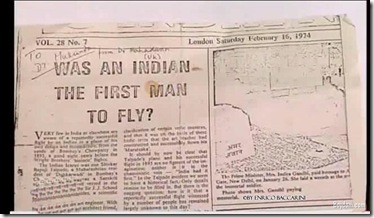 Was the first man to develop an unmanned aircraft an Indian? Well, according to articles of Times of India and by Deccan Herald, it might be true. According to the articles, Shivkar Bapuji Talpade might have accomplished this feat almost a decade ahead of Wright Brothers. Shivkar Bapuji Talpade of Maharashtra ‘purportedly’ flew an unmanned plane, MarutSakha, in 1895. Reports concluded that he obtained the designs from his Guru that consisted of parts of the Vedic texts and designs of Vimanas. The plane flew only a short distance before crashing. The plane allegedly had a mercury ion engine (that seems a bit implausible). He later discontinued his further research on plane due to shortage of funds and no recognition for his achievement. According to the chronicles of one of his student, it flew to a height of 1500 feet before crashing to earth. Detailed info here.
Was the first man to develop an unmanned aircraft an Indian? Well, according to articles of Times of India and by Deccan Herald, it might be true. According to the articles, Shivkar Bapuji Talpade might have accomplished this feat almost a decade ahead of Wright Brothers. Shivkar Bapuji Talpade of Maharashtra ‘purportedly’ flew an unmanned plane, MarutSakha, in 1895. Reports concluded that he obtained the designs from his Guru that consisted of parts of the Vedic texts and designs of Vimanas. The plane flew only a short distance before crashing. The plane allegedly had a mercury ion engine (that seems a bit implausible). He later discontinued his further research on plane due to shortage of funds and no recognition for his achievement. According to the chronicles of one of his student, it flew to a height of 1500 feet before crashing to earth. Detailed info here.
6. What happened to Harappa and Mohenjo-Daro Civilization?
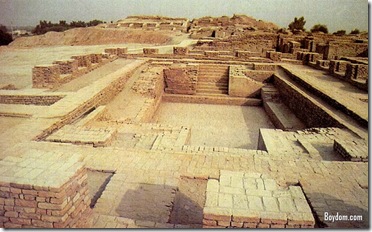 Indus civilization started about 4,500-5,000 years ago and is the earliest known urban civilization of the Indian subcontinent. It flourished on the banks of Indus River in Pakistan and India. It reached its pinnacle around 2500 BC and ended with apparent destruction around 1500 BC. It is still a mystery who the city’s first settlers were and where they came from. Some experts opine they were Sumerians from ancient Mesopotamia. It was an advanced and thriving civilization for its age that completely vanished by 1500 BC. Experts have no clue as to what happened to its inhabitants or where they migrated. Some hypothesized theories are that as ice age ended and oceans cooled to their present temperatures, glaciers melted and flooded river beds and raised sea levels. This submerged a coastal cities and cities on river banks. Another theory is that Harappa and Mohenjo-Daro came to an end due to the invasion of Aryans. Aryans allegedly attacked many of the North Western settlements of India to form their kingdom.Surviving inhabitants possibly migrated to other parts of India.
Indus civilization started about 4,500-5,000 years ago and is the earliest known urban civilization of the Indian subcontinent. It flourished on the banks of Indus River in Pakistan and India. It reached its pinnacle around 2500 BC and ended with apparent destruction around 1500 BC. It is still a mystery who the city’s first settlers were and where they came from. Some experts opine they were Sumerians from ancient Mesopotamia. It was an advanced and thriving civilization for its age that completely vanished by 1500 BC. Experts have no clue as to what happened to its inhabitants or where they migrated. Some hypothesized theories are that as ice age ended and oceans cooled to their present temperatures, glaciers melted and flooded river beds and raised sea levels. This submerged a coastal cities and cities on river banks. Another theory is that Harappa and Mohenjo-Daro came to an end due to the invasion of Aryans. Aryans allegedly attacked many of the North Western settlements of India to form their kingdom.Surviving inhabitants possibly migrated to other parts of India.
5. Twinkle Dwivedi’s Blood Tears
 Haemolacria is an unusual medical condition that causes the person suffering from it to produce tears of blood. The tears can vary from being slightly red tinged to completely composed of blood. Twinkle Dwivedi from Lucknow suffers from this very rare condition that causes her to bleed from eyes and other parts of her body spontaneously without any apparent visible signs of wounds. She has been the subject of a number of medical research studies and also part of a television show on National Geographic. No possible explanation as to her condition was concluded by the researchers. Rashida Khatoon another girl from Patna came forward with similar condition. In both these cases, no pain is reported by them on shedding tears of blood.
Haemolacria is an unusual medical condition that causes the person suffering from it to produce tears of blood. The tears can vary from being slightly red tinged to completely composed of blood. Twinkle Dwivedi from Lucknow suffers from this very rare condition that causes her to bleed from eyes and other parts of her body spontaneously without any apparent visible signs of wounds. She has been the subject of a number of medical research studies and also part of a television show on National Geographic. No possible explanation as to her condition was concluded by the researchers. Rashida Khatoon another girl from Patna came forward with similar condition. In both these cases, no pain is reported by them on shedding tears of blood.
4. Shanti Devi
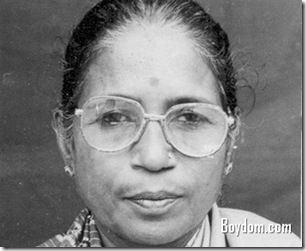 In 1930s, at 4 years of age, Shanti Devi from Delhi, India, told her parents that she had once lived in a place called Mathura and that she had been a mother of three, who died in childbirth, and that her previous name was Ludgi. Because the girl persistence with the story, her parents investigated. It turned out in Mathura a woman named Ludgi had recently died. They took Shanti to the village where she began to speak the local dialect and recognized her previous-life husband and children. The case was brought to the attention of Mahatma Gandhi who set up a commission to investigate and a report was published in 1936. She gave 24 accurate statements matching confirmed facts about Ludgi’s life.
In 1930s, at 4 years of age, Shanti Devi from Delhi, India, told her parents that she had once lived in a place called Mathura and that she had been a mother of three, who died in childbirth, and that her previous name was Ludgi. Because the girl persistence with the story, her parents investigated. It turned out in Mathura a woman named Ludgi had recently died. They took Shanti to the village where she began to speak the local dialect and recognized her previous-life husband and children. The case was brought to the attention of Mahatma Gandhi who set up a commission to investigate and a report was published in 1936. She gave 24 accurate statements matching confirmed facts about Ludgi’s life.
3. Purulia Arms Drop Case
 On the night of December 17, 1995, a Latvian aircraft (Antonov An-26 Aircraft) dropped a huge consignment of arms consisting of hundreds of AK-47 rifles and more than a million rounds of ammunition over several villages of Purulia district of West Bengal. The crew of the aircraft consisted of five Latvian citizens and one British citizen. They were arrested and sentenced to life imprisonment. Following the intervention of Russian authorities and British government, they were later pardoned and released. The chief accused was “Kim Davy” claimed that it was a conspiracy of the Indian government in collaboration with RAW and MI5 to overthrow the communist government of West Bengal. He alleged that Indian Government assured him of his safe return to Denmark. Some certificates submitted by CBI to Kolkata High Court remarked that those weapons were really meant for Bangladeshi Army. The real motive behind this massive arms drop still remains unknown.
On the night of December 17, 1995, a Latvian aircraft (Antonov An-26 Aircraft) dropped a huge consignment of arms consisting of hundreds of AK-47 rifles and more than a million rounds of ammunition over several villages of Purulia district of West Bengal. The crew of the aircraft consisted of five Latvian citizens and one British citizen. They were arrested and sentenced to life imprisonment. Following the intervention of Russian authorities and British government, they were later pardoned and released. The chief accused was “Kim Davy” claimed that it was a conspiracy of the Indian government in collaboration with RAW and MI5 to overthrow the communist government of West Bengal. He alleged that Indian Government assured him of his safe return to Denmark. Some certificates submitted by CBI to Kolkata High Court remarked that those weapons were really meant for Bangladeshi Army. The real motive behind this massive arms drop still remains unknown.
2. Prahlad Jani
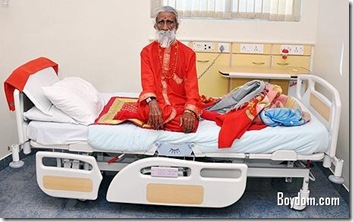 Prahlad Jani or Mataji (as he is well known) is an Indian sadhu, who claims to have lived without food or water since 1940. To date two observation studies on Jani have been conducted. One was in 2003 and another one in 2010. In 2010, he was under video surveillance of 3 cameras 24×7 for 15 days. About 35 scientists from Defence Institute of Physiology and Allied Sciences monitored his health all through 15 days. Yet they didn’t find any evidence that Jani ate or drank anything during the 15-day ordeal. Till the end investigators did not find any adverse effects in his body from hunger or dehydration. One possible explanation given was that yoga exercises may have altered Jani’s body to undergo a biological transformation. According to Daily Mail reports, doctors said that after fasting for two weeks, Jani was healthier than the average 40-year-old. Clinical, biochemical, radiological, and other relevant examinations done on Prahlad Janireported him to be within safe range throughout the study. The possible reason behind his survival without essential elements for sustainment of life continues to baffle scientists both home and abroad.
Prahlad Jani or Mataji (as he is well known) is an Indian sadhu, who claims to have lived without food or water since 1940. To date two observation studies on Jani have been conducted. One was in 2003 and another one in 2010. In 2010, he was under video surveillance of 3 cameras 24×7 for 15 days. About 35 scientists from Defence Institute of Physiology and Allied Sciences monitored his health all through 15 days. Yet they didn’t find any evidence that Jani ate or drank anything during the 15-day ordeal. Till the end investigators did not find any adverse effects in his body from hunger or dehydration. One possible explanation given was that yoga exercises may have altered Jani’s body to undergo a biological transformation. According to Daily Mail reports, doctors said that after fasting for two weeks, Jani was healthier than the average 40-year-old. Clinical, biochemical, radiological, and other relevant examinations done on Prahlad Janireported him to be within safe range throughout the study. The possible reason behind his survival without essential elements for sustainment of life continues to baffle scientists both home and abroad.
1. Death of Subhas Chandra Bose, Lal Bahadur Shastri, Homi Bhabha
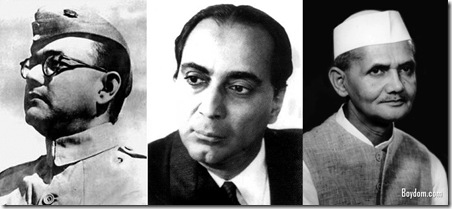 The deaths of two national leaders and a prominent Indian scientist has been a topic of debate since their death. While Lal Bahadur Shastri and Homi Bhabha died under questionable circumstances, Subhas Chandra Bose on the other hand is considered to have survived the plane crash in which he was allegedly killed. Shastri died in Tashkent, Russia a day after signing the Tashkent Declaration possibly due to heart attack. His sudden death led to spinning ofconspiracy theories that he was poisoned. This theory is strengthened by the fact that no postmortem took place to identify the exact reason behind his death, both in Russia or by the Government of India back home. Indian nuclear physicist, Homi Jehangir Bhabha also known as “Father of Indian Nuclear Programme” died when Air India Flight 101 crashed near Mont Blanc, France on January 24, 1966. One conspiracy theory is that CIA was involved with the crash possibly to cripple India’s nuclear programme. Subhas Chandra Bose is alleged to have died in 1945 in a plane crash in Taiwan while en route to Tokyo. Absence of his body in the temple where he was possibly cremated led to rise in theories pertaining his possible survival. An Indian monk named Bhagwanji or Gumnami Baba, who lived in Faizabad, Ayodhya had a very close resemblance to Subhas Chandra Bose and people have theorized that he was Netaji living incognito to hide his real identity. Bhagwanji died on September 16, 1985. More on the deaths of these three great men and other Indian conspiracy theories here.
The deaths of two national leaders and a prominent Indian scientist has been a topic of debate since their death. While Lal Bahadur Shastri and Homi Bhabha died under questionable circumstances, Subhas Chandra Bose on the other hand is considered to have survived the plane crash in which he was allegedly killed. Shastri died in Tashkent, Russia a day after signing the Tashkent Declaration possibly due to heart attack. His sudden death led to spinning ofconspiracy theories that he was poisoned. This theory is strengthened by the fact that no postmortem took place to identify the exact reason behind his death, both in Russia or by the Government of India back home. Indian nuclear physicist, Homi Jehangir Bhabha also known as “Father of Indian Nuclear Programme” died when Air India Flight 101 crashed near Mont Blanc, France on January 24, 1966. One conspiracy theory is that CIA was involved with the crash possibly to cripple India’s nuclear programme. Subhas Chandra Bose is alleged to have died in 1945 in a plane crash in Taiwan while en route to Tokyo. Absence of his body in the temple where he was possibly cremated led to rise in theories pertaining his possible survival. An Indian monk named Bhagwanji or Gumnami Baba, who lived in Faizabad, Ayodhya had a very close resemblance to Subhas Chandra Bose and people have theorized that he was Netaji living incognito to hide his real identity. Bhagwanji died on September 16, 1985. More on the deaths of these three great men and other Indian conspiracy theories here.
Originally posted 2014-05-17 10:58:12. Republished by Blog Post Promoter

